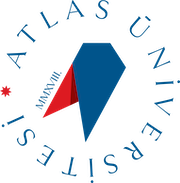| Course Objectives: |
To learn the general structure, molecular and genetic characteristics of a living organism, to understand the cell and its functions, to learn the metabolic reactions that occur in the cell, to understand the basic principles of heredity, to have knowledge about basic genetic and molecular genetic principles. |
| Course Content: |
Biology Science, Birth of Molecular Biology, Biological Molecules, Enzymes, Cellular Organization, Transport and Stimulus Transmission in Cell Membrane, Cellular Energy and Metabolism, Cell Cycle and Division, Week Growth and Development, Aging Biology, Structure of Genetic Material, Proliferation and Protein Synthesis, Mutation and Repair, Control of Gene Expression, DNA Technology and Applications, Genome Organization, DNA Sequences and Chromosome, Basic Principles of Inheritance, Hereditary Metabolic Diseases, Molecular Biology of Cancer. |
| Week |
Subject |
Related Preparation |
| 1) |
Introduction to the Cell, Cell Structure and Types (Prokaryotic and Eukaryotic Cells) |
PPT prepared for the lesson |
| 2) |
Structure and Function of Cell Membrane, Transport Mechanisms (Endocytosis, Exocytosis) |
PTT prepared for the lesson |
| 3) |
Microscope Training |
PPT prepared for the lesson |
| 4) |
Structure and Functions of Cell Organelles |
PPT prepared for the lesson |
| 5) |
Cell Skeleton (Centriole, Microtubules, Filaments, Cilia, Flagella) |
PPT prepared for the lesson |
| 6) |
Investigation of Cell Morphologies Preparation of Preparations |
PPT prepared for the lesson |
| 7) |
Midterm Exam |
|
| 8) |
Nucleus Structure and Functions, Molecular Mechanisms of Nuclear Transport |
PPT prepared for the lesson |
| 9) |
Genetic Materials; DNA, From DNA to Chromosome; Packaging of DNA
DNA – RNA Structure, Function and Gene, Genetic Code |
PPT prepared for the lesson |
| 10) |
Replication, Transcription, Translation |
PPT prepared for the lesson |
| 11) |
Cell Cycle, Mitosis-Meiosis Division Mechanisms Controlling Cell Cycle |
PPT prepared for the lesson |
| 12) |
Genetic Concepts, Mendelian Inheritance-Non Mendelian Inheritance |
PPT prepared for the lesson |
| 13) |
Mutagens and Mutations DNA Damage and Repair Mechanisms |
PPT prepared for the lesson |
| 14) |
Nutrigenetic |
PPT prepared for the lesson |
| 15) |
Nutrigenetic |
PPT prepared for the lesson |
| 16) |
Final Exam |
PPT prepared for the lesson |
| |
Program Outcomes |
Level of Contribution |
| 1) |
Graduates have basic theoretical and applied knowledge about anesthesia. |
|
| 2) |
Graduates have knowledge of the ethical framework related to anesthesia practices. |
|
| 3) |
Graduates use basic theoretical and applied knowledge about anesthesia. |
|
| 4) |
Graduates carry out a given task independently using their basic knowledge of anesthesia applications. |
|
| 5) |
Graduates can critically evaluate their basic knowledge and skills related to anesthesia. |
|
| 6) |
Graduates identify their needs for learning and have the competence to direct their own learning. |
|
| 7) |
Graduates express themselves effectively by communicating both verbal and written by using information and communication technologies related to the field of anesthesia. |
|
| 8) |
Graduates follow the developments in the agenda of the society and the world in the field of health and evaluate them with a sense of social responsibility. |
|
| 9) |
Graduates perform pre- and post-anaesthetic evaluation, pre-application material and drug preparation, and monitoring. |
|
| 10) |
Graduates follow the patient during the anesthesia application. |
|
| 11) |
Graduates know the basic functioning mechanisms of the organs and systems that make up the human organism and the effects and side effects of the drugs used in anesthesia on these systems. |
|
| 12) |
Graduates can evaluate the patient's airway at the end of the surgical intervention and ensure patient safety in all processes. |
|
| 13) |
Graduates know the laws, regulations, legislation and professional ethical rules regarding their duties, rights and responsibilities as Anesthesiologist and act in accordance with these rules. |
|
| 14) |
Graduates are aware of the duties and responsibilities of the anesthesia technician, have sufficient knowledge and skills, keep patient caregivers and people at the forefront, can perform active teamwork together with effective communication, and aim to constantly learn and improve the consumed information. |
|
 BİLGİ PAKETİ / DERS KATALOĞU
BİLGİ PAKETİ / DERS KATALOĞU
